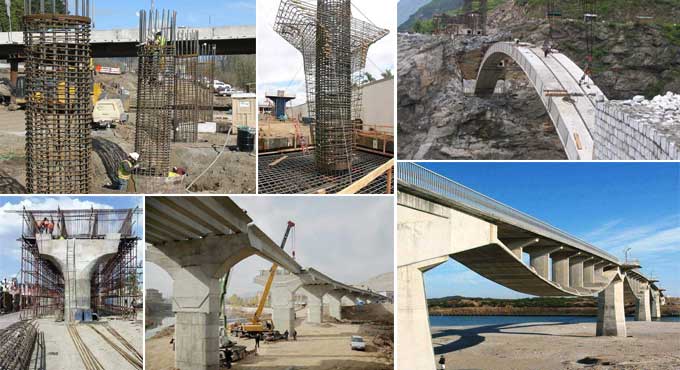NEWS | SOFTWARE | SHEET
The Foundation Construction Process for Bridges
A well foundation is quite essential for a building.
However, an appropriately constructed foundation can be more notably significant for a bridge. Furthermore, due to the bad condition of infrastructure, there is necessity to build bridges having robust foundation construction.
Though, it might look simple in the beginning, constructing a foundation with respect to a bridge is a complex procedure. In case, a bridge is passing above water, there is a strong possibility that it is going to require underwater supports.
In this section, some processes of bridge foundation construction are going to be described.
Difference Between Shallow Foundation and Deep Foundation Construction
One doesn’t have to be an architect to figure out the dissimilarity between a shallow foundation and a deep foundation.
However, depth is not the single dissimilarity amid the two. Every process moves the weight of the load towards the ground in a distinct manner.
Shallow foundations usually possess a broad base, which afterwards shifts the weight of the load upon the topsoil. In the instance of a shallow foundation, the soil alone takes the load.
Deep foundations are generally narrow and get through the topsoil towards deep and strong layers of dirt. At this point, majority of the support even originates from the friction of dirt opposing the sides of the foundation.
Piling
The highly common process to build a deep foundation for a bridge is known as piling.
Long and narrow posts known as piles are raised into the air by means of a crane and directed within the land by means of a large hammer known as a piledriver.
Once the pile attains the needed depth, it is capped off as well as fastened.
Piles can be made from numerous materials like concrete, steel, and wood as well. Though, prefabricated concrete is increasingly used.
Underwater Foundation Construction
In case one is building a bridge above a lake or river, one is going to meet numerous distinct difficulties.
Before one does something, one is going to have to ensure that the piles are safeguarded against corrosion. Ultimately, in case the bridge will persist in future periods, the foundation of the bridge has to too.
There’re some methods one may carry out underwater foundation construction.
Battered Piles
That is the easiest process of underwater piling.
In place of a single beam, battered piles utilize numerous, kind of similar to a twisted fork. The piles are formed in accordance with the depth of the water.
They are afterwards released into the water out of a barge where they are directed into the soft mud. Furthermore, the tines of the battered piles disperse the weight in numerous directions to provide utmost support.
Battered piles are usually utilized for small bridges in shallower water.
Cofferdam
With respect to bridges with large support towers, consider the Brooklyn Bridge, construction is a bit more difficult.
Numerous thin and sheet like piles are arranged jointly to form a waterproof chamber known as a cofferdam. That chamber is afterwards directed into the soil as well as the water isdrawn off.
After it is without water, workers build the towers inside the dry cofferdam. Moreover, the outcome is a robust foundation that is going to provide support for periods.
Though, cofferdams can be very risky as well as expose workers to danger.
Slurry Drilling
As the soil on the base of a body of water is quite soft, it is quite challenging to drill into it devoid of it giving in.
In order to carry out this, a muddy mix is put in the position of the required hole like a placeholder. After this is in the position, the foundations might be directed in position.
To get more clear ideas, go through the following exclusive construction video tutorial.
Lecturer: parag pal
Recommended Articles:
Bridge Cost Estimate Worksheet Download
Different Types of Loads on Bridges


